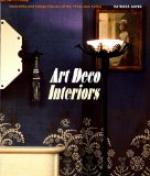Following the Gothic Period came the Renaissance of Greek art which began in Italy under the leadership of Leonardo Da Vinci and Raphael, who, rejecting the existing types of degraded decorative art, in Italy a combination of the Byzantine and Gothic—turned to the antique, the purest Greek styles of Pericles’ time. The result was another period of perfect line and proportion, called the Italian Renaissance, a great wave of art which swept over all Europe, gaining impetus from the wise patronage of the ruling Medicis. One of them (Pope Leo X with the co-operation of Italy’s reigning dukes and princes) employed and so developed the extraordinary powers of Michael Angelo, Titian, Raphael, Andrea del Sarto and Correggio.
By the end of the fifteenth century, Classic Greek art was engrossing the mind of Western Europe, classical literature was becoming the fashion and there was even an attempt to make Latin the popular language.
It was during the Renaissance that Palladio rebuilt the palaces of Italy,—beautiful beyond words, and that Benvenuto Cellini designed in gold, silver and bronze in a manner never since equalled. From that same period dates the world-famous Majolica of Urbino, Pesaro and Gubbio, shown in our museums. So far as house-furnishing went, aside from palaces, there was but little that was appropriate for intimate domestic life. The early Renaissance furniture was palatial, architectural in outline and, one might almost say, in proportions. The tables were impossibly high, the chairs were stiff, and the cabinets immense and formal in outline. It had, however, much stately beauty, and very lovely are certain old pieces of carved and gilded wood where the gilt, put on over a red preparation and highly burnished, has rubbed off with time, and shows a soft glow of colour through the gold.
But as always, the curse of over-elaboration to please perverted minds, was resorted to by cabinet-makers who copied mosaics with their inlaying, and invented that form known as pietra-dura—polished bits of marble, agates, pebbles and lapis lazuli. Ivory was carved and used as bas-reliefs and ivory and tortoise shell, brass and mother-of-pearl used as inlay. Elaborate Arabesque designs inlaid were souvenirs of the Orient, and where the cabinetmaker’s saw left a line, the cuts were filled in with black wood or stained glue, which brought out the design and so gave an added decorative effect. Skilled artisans had other designs bitten into wood by acids, and shading was managed by pouring hot sand on the surface of the wood. Hallmarks of the Renaissance are designs which were taken from Greek and Roman mythology, and allegories representing the elements, seasons, months and virtues. Also, battle scenes and triumphal marches.
The insatiable love for decoration found still another expression in silver and gold plaques of the highest artistic quality, embossed and engraved for those princes of Florence, Urbino, Ferrara, Rome, Venice and Naples, who vied with one another in extravagance until the inevitable reaction came.




